Abstract
A lipid mixture (monoolein, oleic acid-1-14C, and palmitic acid-9,10-3H) was infused intraduodenally at a steady rate for 8 hr in fasted, unanesthetized rats. The same dose of lipid was given together with pure conjugated bile salts either as an emulsion, 2.5 mM bile salts, or as a micellar solution, 10 mM bile salts. The emulsion contained very little or no micellar lipid. Thoracic duct lymph was collected and in some experiments bile and pancreatic juice were drained to the exterior. After 4-5 hr infusion the same steady lymphatic output of radioactive fatty acids was obtained with emulsion as with micellar solution. It was concluded that absorption of fatty acid could proceed efficiently in the virtual absence of micellar solubilization. In rats with biliary plus pancreatic fistulae, labeled triglyceride was absorbed poorly relative to free fatty acids in the same emulsified particles. This suggested that fatty acids were transferred to the absorptive cells in monomolecular solution and not as emulsion particles.
Substitution of a synthetic nonionic detergent for bile salts in lipid mixtures given to rats with biliary and pancreatic fistulae did not affect the lymphatic output of radioactive fatty acids. This indicated that mucosal esterification of labeled free fatty acids was normal in the absence of bile salts. The physical state of the lipid did not affect the pathway of absorption. Finally, comparison of the increased output of esterified fat in the lymph with the output of labeled fat suggested that fat absorption did not greatly affect the turnover of endogenous, unlabeled fat. Results were consistent with the view that most of the endogenous lymph fat comes from reabsorbed biliary lipid.
Full text
PDF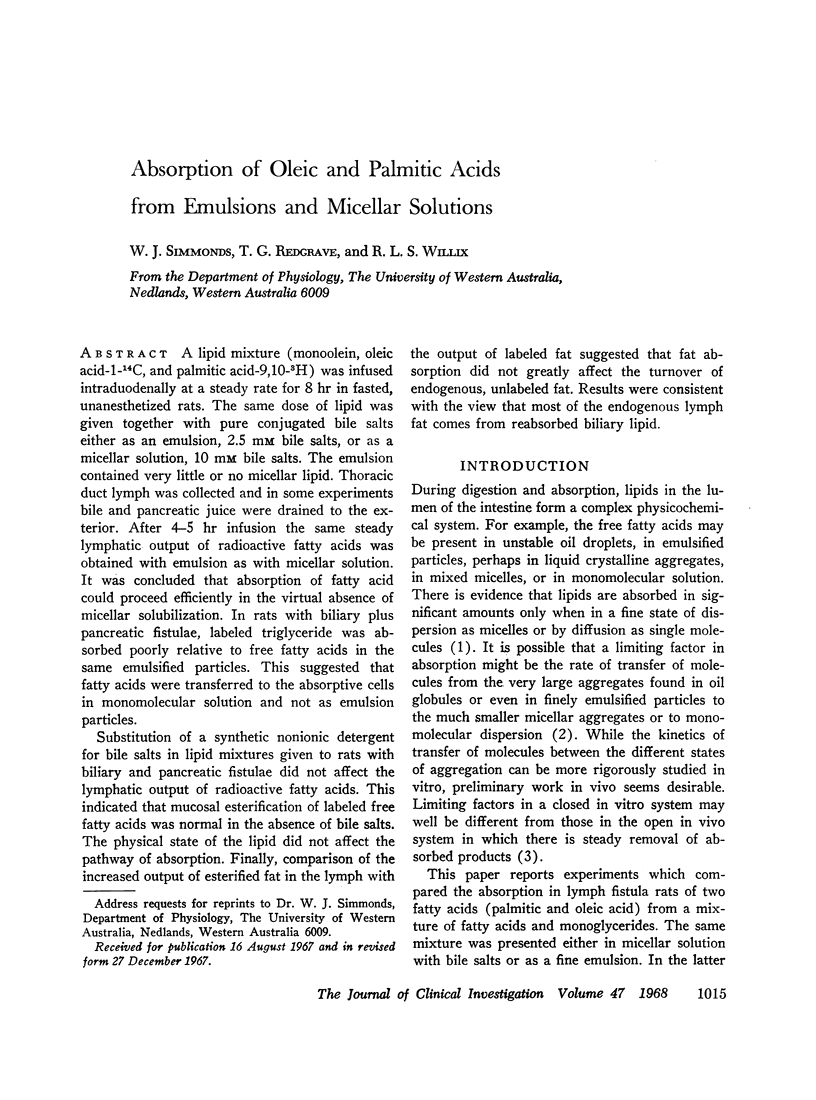
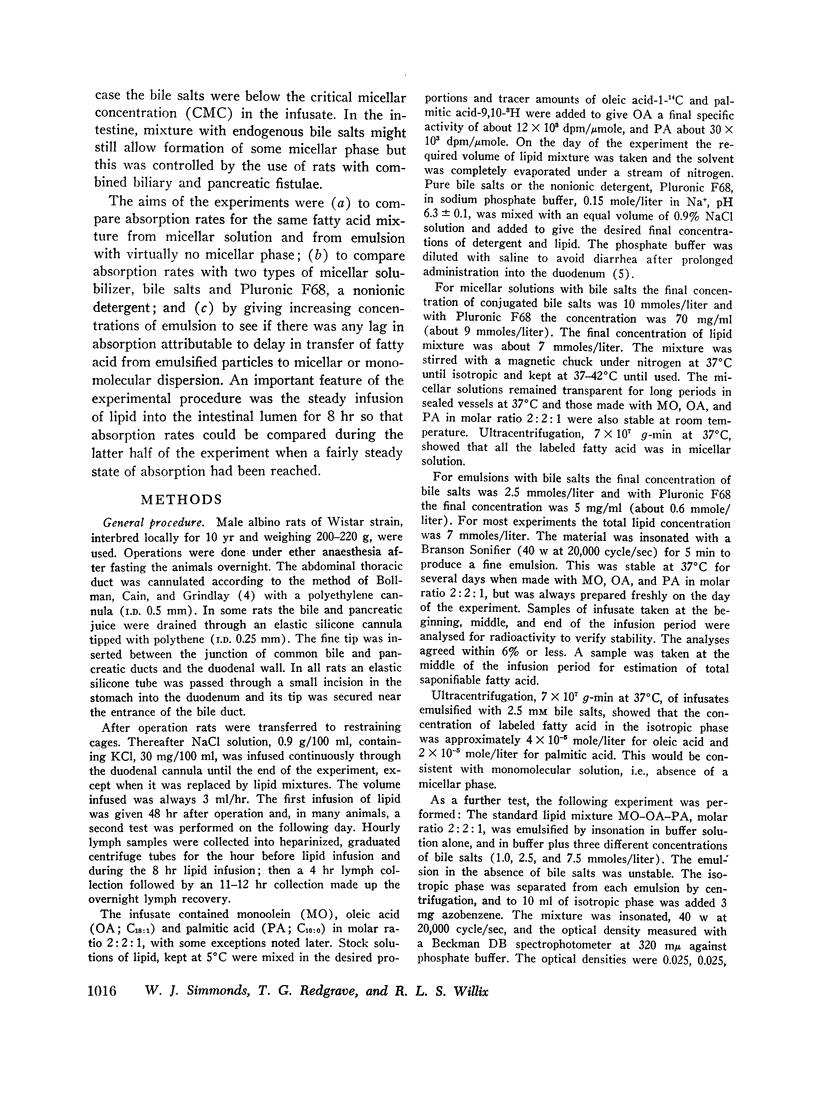
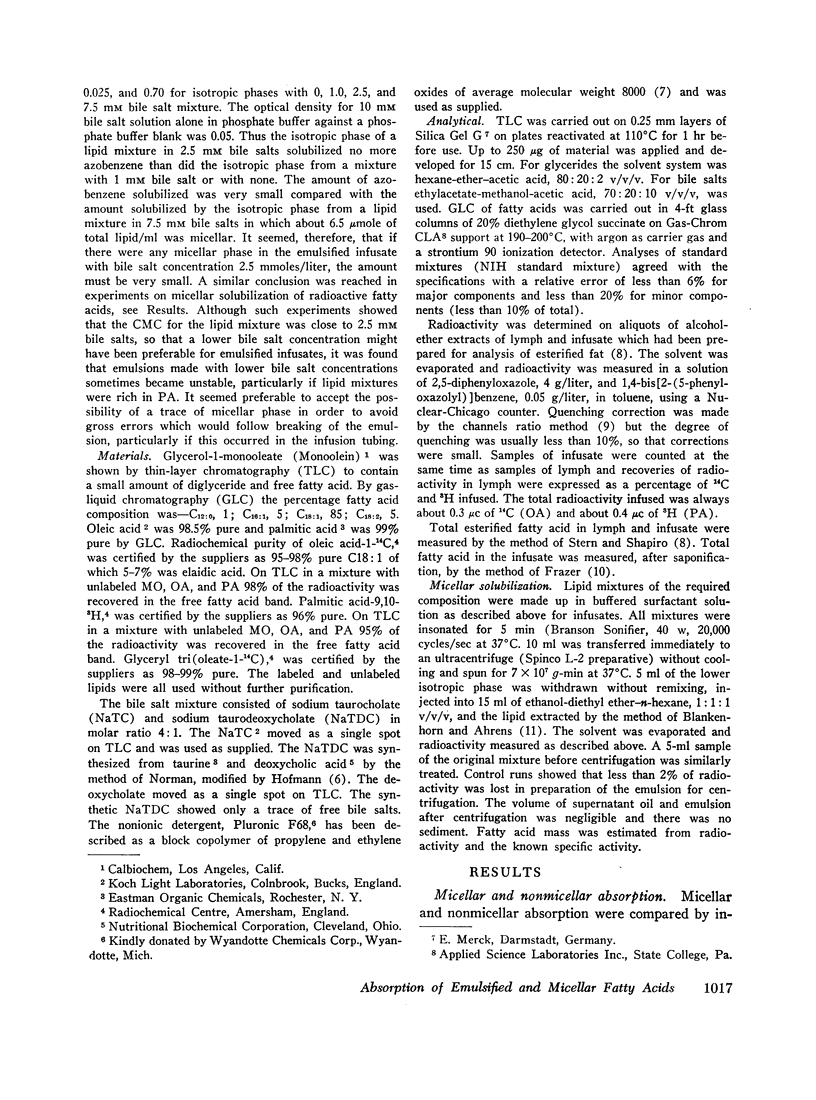
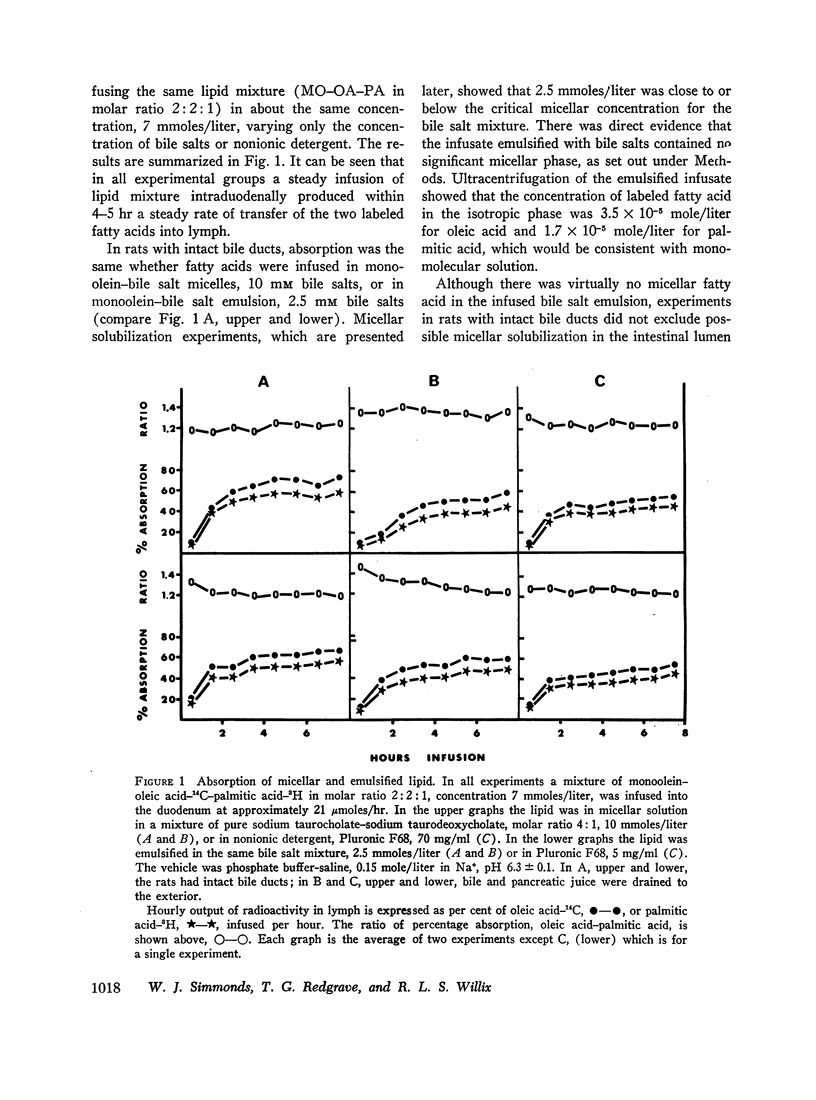
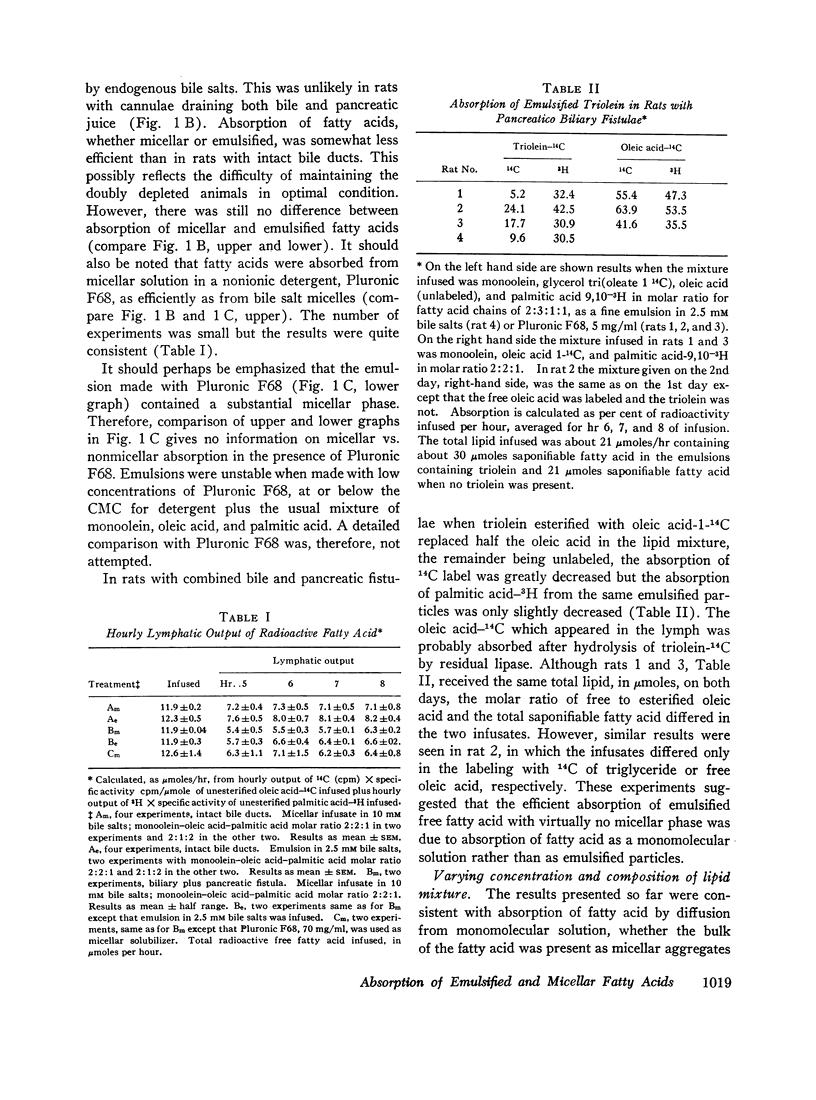
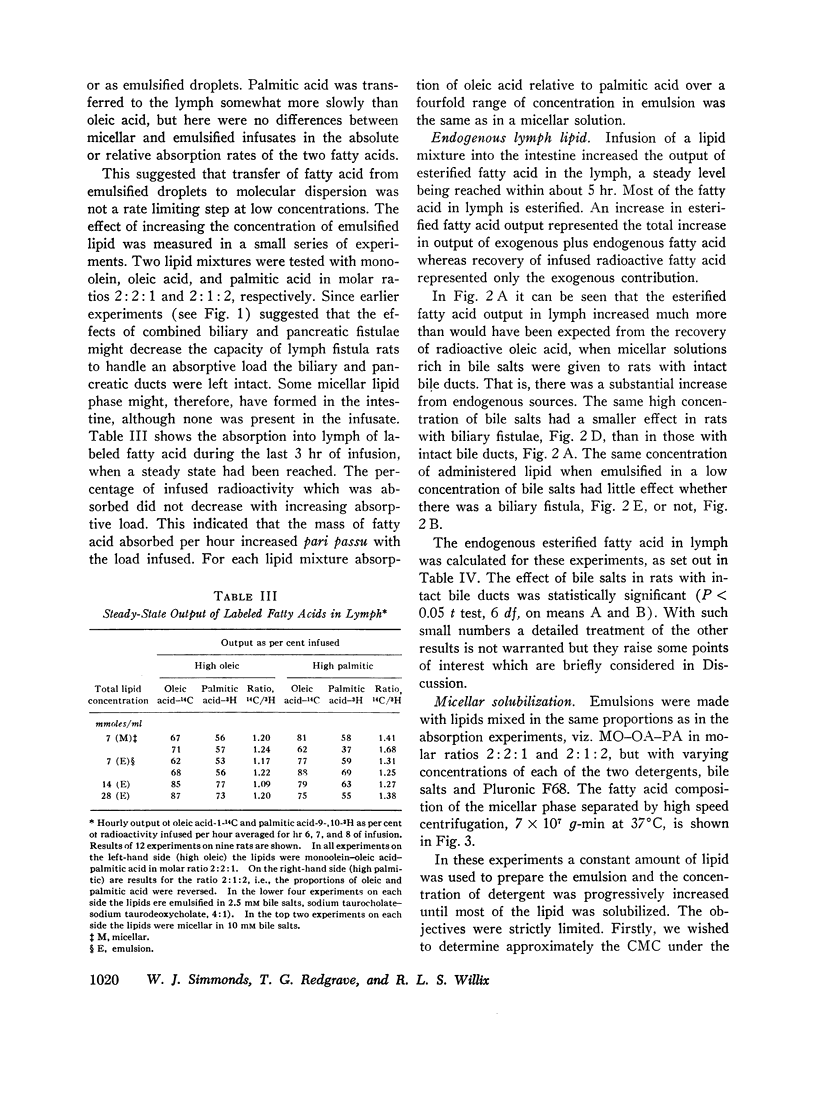
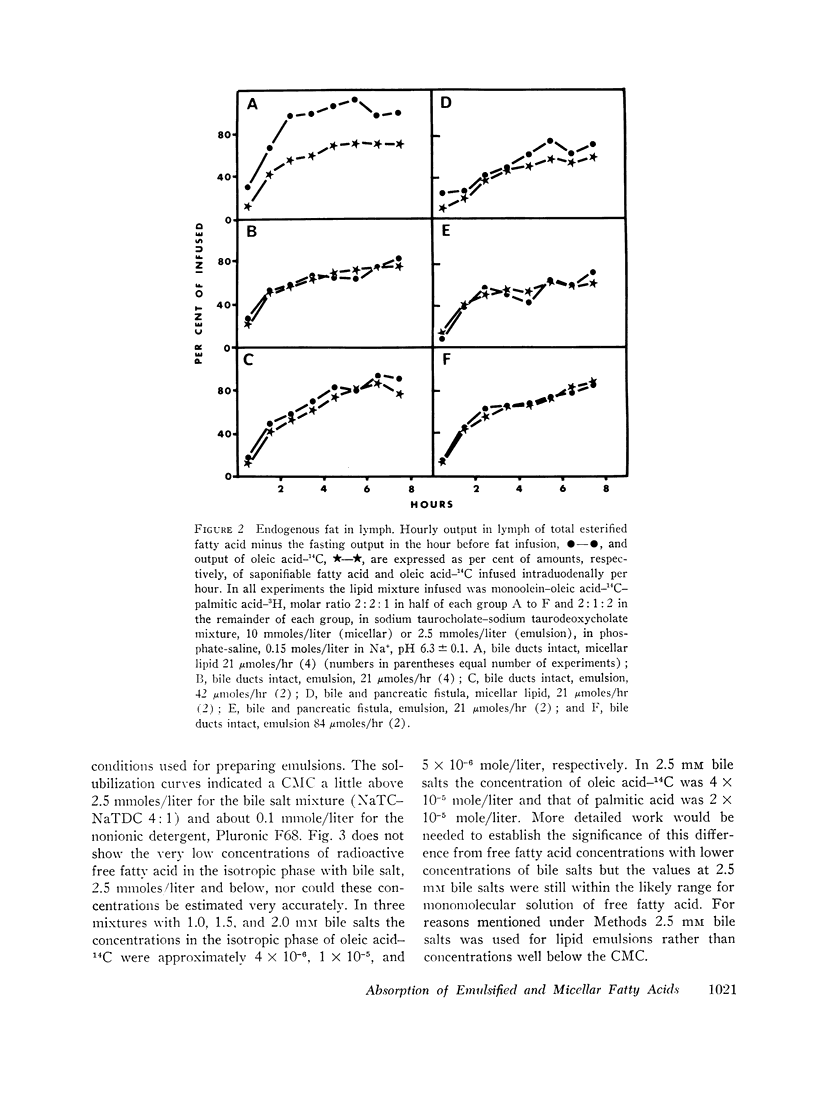
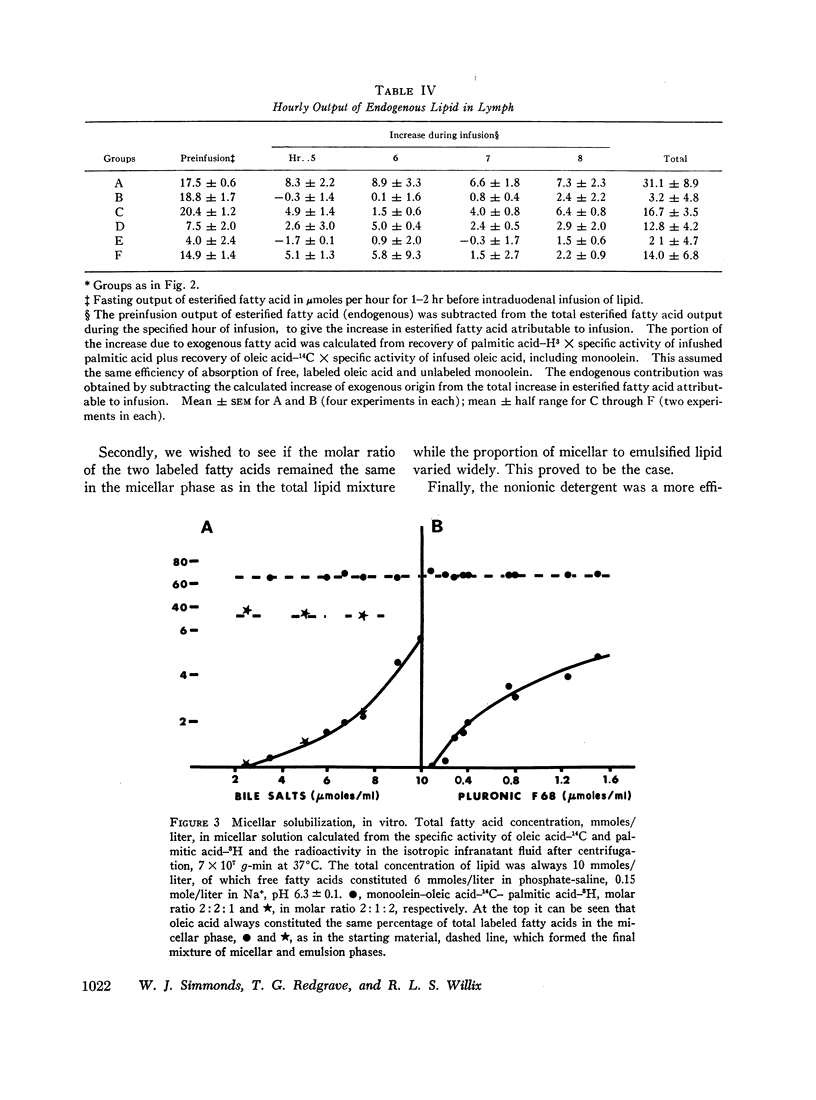
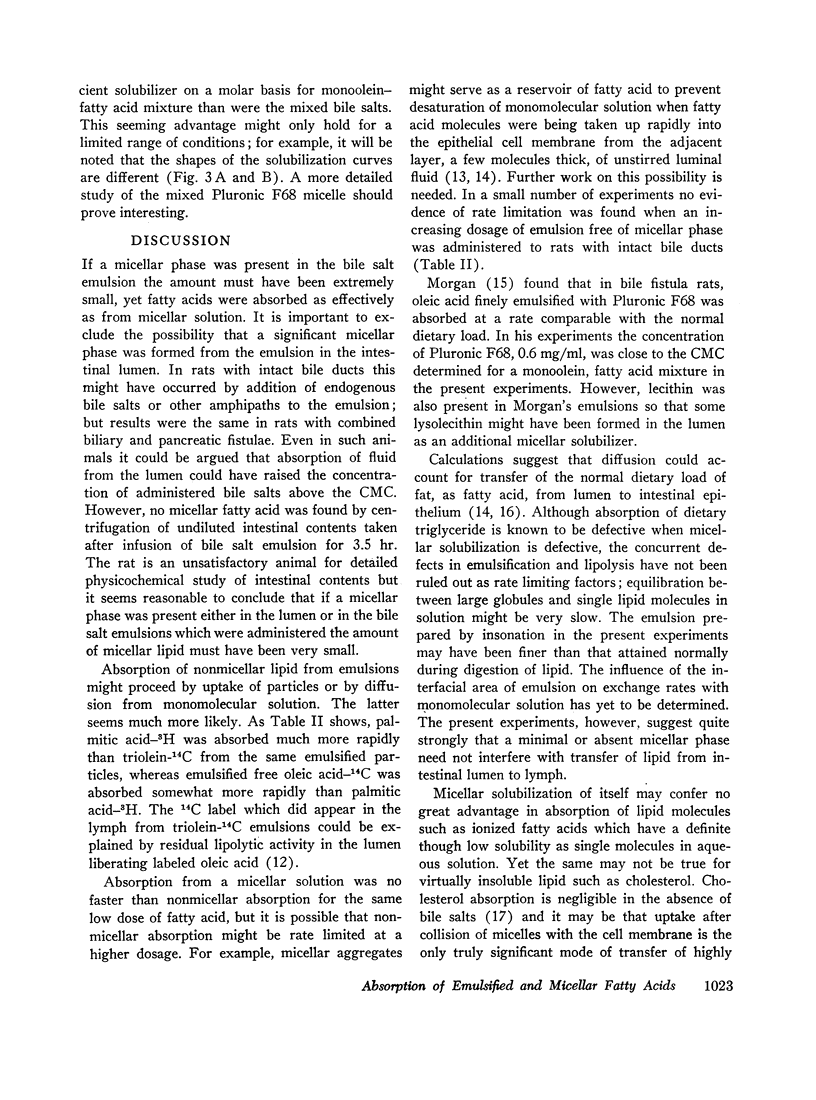

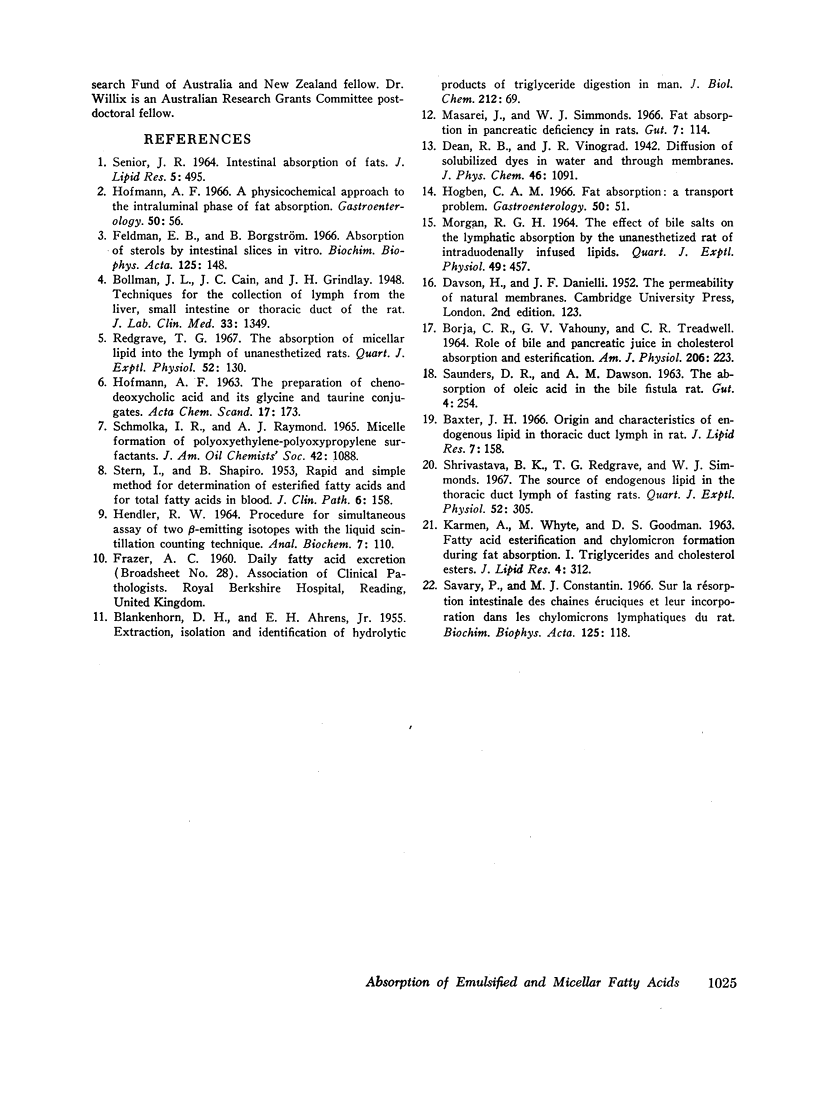
Selected References
These references are in PubMed. This may not be the complete list of references from this article.
- BLANKENHORN D. H., AHRENS E. H., Jr Extraction, isolation, and identification of hydrolytic products of triglyceride digestion in man. J Biol Chem. 1955 Jan;212(1):69–81. [PubMed] [Google Scholar]
- BORJA C. R., VAHOUNY G. V., TREADWELL C. R. ROLE OF BILE AND PANCREATIC JUICE IN CHOLESTEROL ABSORPTION AND ESTERIFICATION. Am J Physiol. 1964 Jan;206:223–228. doi: 10.1152/ajplegacy.1964.206.1.223. [DOI] [PubMed] [Google Scholar]
- Baxter J. Origin and characteristics of endogenous lipid in thoracic duct lymph in rat. J Lipid Res. 1966 Jan;7(1):158–166. [PubMed] [Google Scholar]
- Feldman E. B., Borgström B. Absorption of sterols by intestinal slices in vitro. Biochim Biophys Acta. 1966 Aug 3;125(1):148–156. doi: 10.1016/0005-2760(66)90152-4. [DOI] [PubMed] [Google Scholar]
- HENDLER R. W. PROCEDURE FOR SIMULTANEOUS ASSAY OF TWO BETA-EMITTING ISOTOPES WITH THE LIQUID SCINTILLATION COUNTING TECHNIQUE. Anal Biochem. 1964 Jan;7:110–120. doi: 10.1016/0003-2697(64)90125-3. [DOI] [PubMed] [Google Scholar]
- Hofmann A. F. A physicochemical approach to the intraluminal phase of fat absorption. Gastroenterology. 1966 Jan;50(1):56–64. [PubMed] [Google Scholar]
- Hogben C. A. Fat absorption: a transport problem. Gastroenterology. 1966 Jan;50(1):51–55. [PubMed] [Google Scholar]
- KARMEN A., WHYTE M., GOODMAN D. S. FATTY ACID ESTERIFICATION AND CHYLOMICRON FORMATION DURING FAT ABSORPTION. 1. TRIGLYCERIDES AND CHOLESTEROL ESTERS. J Lipid Res. 1963 Jul;4:312–321. [PubMed] [Google Scholar]
- MORGAN R. G. THE EFFECT OF BILE SALTS ON THE LYMPHATIC ABSORPTION BY THE UNANAESTHETIZED RAT OF INTRADUODENALLY INFUSED LIPIDS. Q J Exp Physiol Cogn Med Sci. 1964 Oct;49:457–465. doi: 10.1113/expphysiol.1964.sp001751. [DOI] [PubMed] [Google Scholar]
- Masarei J., Simmonds W. J. Fat absorption in pancreatic deficiency in rats. Gut. 1966 Apr;7(2):114–118. doi: 10.1136/gut.7.2.114. [DOI] [PMC free article] [PubMed] [Google Scholar]
- Redgrave T. G. The absorption of micellar lipid into the lymph of unanaesthetised rats. Q J Exp Physiol Cogn Med Sci. 1967 Apr;52(2):130–138. doi: 10.1113/expphysiol.1967.sp001894. [DOI] [PubMed] [Google Scholar]
- SAUNDERS D. R., DAWSON A. M. THE ABSORPTION OF OLEIC ACID IN THE BILE FISTULA RAT. Gut. 1963 Sep;4:254–260. doi: 10.1136/gut.4.3.254. [DOI] [PMC free article] [PubMed] [Google Scholar]
- SENIOR J. R. INTESTINAL ABSORPTION OF FATS. J Lipid Res. 1964 Oct;5:495–521. [PubMed] [Google Scholar]
- STERN I., SHAPIRO B. A rapid and simple method for the determination of esterified fatty acids and for total fatty acids in blood. J Clin Pathol. 1953 May;6(2):158–160. doi: 10.1136/jcp.6.2.158. [DOI] [PMC free article] [PubMed] [Google Scholar]
- Savary P., Constantin M. J. Sur la résorption intestinale des chaines éruciques et leur incorporation dans les chylomicrons lymphatiques du rat. Biochim Biophys Acta. 1966 Aug 3;125(1):118–128. [PubMed] [Google Scholar]
- Shrivastava B. K., Redgrave T. G., Simmonds W. J. The source of endogenous lipid in the thoracic duct lymph of fasting rats. Q J Exp Physiol Cogn Med Sci. 1967 Jul;52(3):305–312. doi: 10.1113/expphysiol.1967.sp001916. [DOI] [PubMed] [Google Scholar]


